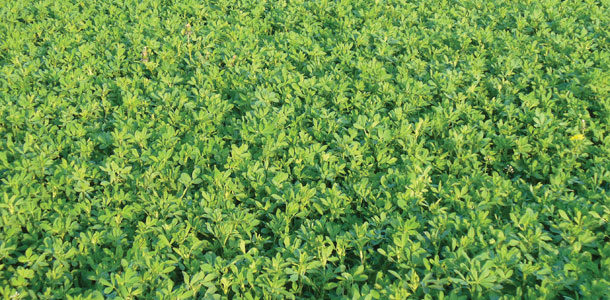Producers often ask me whether seed treatments for alfalfa are a worthwhile investment, and the short answer is “yes.”
Quality seed deserves to be protected, and new seed treatments help speed up emergence and set up crops for success.
Ongoing research reveals more benefits that seed treatments provide, and their advantages are beginning to become indisputable. There is a long list of ways that seed treatments can make your operation more profitable, but the main term I use is “protection.”
Equip your seed
Alfalfa seed is tiny and fragile, especially once it’s outside the safety of its bag. This tiny seed is then planted in a tough, rugged, uncertain environment. How can you increase its survival rate?
Seed treatments, including an insecticide or fungicide, can prevent insects and disease from attacking seed and young plants when they’re most vulnerable.
However, treatments put a barrier around the seed to help reduce emergence-robbing microorganisms like aphanomyces. New plant genetics and new treatments can provide added protection.
Because alfalfa seed is smaller and has less strength than corn or soybean seed, it cannot withstand underground threats.
Most threats are not readily visible or predictable without extensive scouting and experience, so seed treatments can provide an advantage.
Seed that has been properly treated will be in a better position to battle the elements and establish uniform, healthy stands.
Seed treatments can also act as an insurance policy against the following symptoms caused by sub-par planting conditions, so yield is not sacrificed:
-
Chilling injury – This happens when farmers plant too early in soils that are too cold. For a seed to germinate, it must absorb water.
If the water is too cold when it’s absorbed, tissue damage will occur within the seedling. Such injury will either kill the alfalfa plant or drastically slow down emergence, which can allow diseases and other problems to enter.
Chilling injury can have a significant negative impact on emergence if soil temperatures get below 14ºF.
-
Soil compaction – If your field is too wet but you work the soil anyway, compaction will likely cause decreased germination.
Root establishment is essential, and because alfalfa roots have less strength and storage than corn, nutrient uptake can be greatly reduced, causing significant risk to the plant.
-
Soil crusting – Wet soil at planting can cause a crusted layer to form, which may delay or prevent seedling emergence.
Damage can be caused to the plant as it attempts to push through the crust, which may result in significant stand reductions and lower yield potential. Because this can delay emergence, the seedling could remain beneath the soil longer and become exposed to additional threats that the seed treatment could protect against.
Facilitate emergence
Today’s seed treatments are better than ever at helping set up fragile alfalfa seed for emergence success.
Seed treatment surrounds the alfalfa seed, helping it absorb soil moisture quickly to begin the germination process. Seed treatments also contain key micronutrients as well as growth promoters.
Fast, uniform germination and healthy seedlings are the most critical points of development in the life cycle of the alfalfa plant.
Rapid emergence decreases the damaging effects of soil-borne pests and pathogens, ensuring a healthier stand. Success at this stage of growth creates a stronger long-term stand.
Emergence sets the pace for the entire stand’s success. The faster the seedling emerges, the faster the crown will develop and allow for photosynthesis to begin feeding the plant.
New alfalfa seed technologies and proper planting dates should provide confidence that your seed will be able to emerge comfortably prior to the first frost.
More live plants per bag
One final point to consider is that coating adds volume to seed and results in fewer seeds per bag. Postemergence stand count data from years of research shows the benefits of coating, especially on the toughest of soils.
Even with fewer seeds in the bag, the same amount of seed usually results in more live plants per acre versus the same seed treated only with a standard fungicide and inoculant.
Reading tags and adjusting seeding rates according to germination is important. Calibrating the drill is also an important factor to help achieve desired results. There is a certain peace of mind about doing everything within your power to get the crop off to a good start. FG
PHOTO
This alfalfa stand in Wisconsin benefitted from seed treatment and was successful in creating a uniform establishment. Photo courtesy of Corey Catt. Corey Catt
Corey Catt
Forage Products Manager
Latham Hi-Tech Seeds














